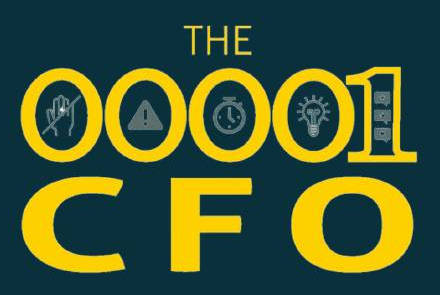
01 Jul Four 0s and a 1 defining the future of Finance
William Gibson said, the future is already here, its just not evenly distributed. I am sure he was not referring to the binary codes’ representation of everything digital in 0 and 1. The finance function is at the crossroads of digital transformation in a post COVID-19 world, wherein the pandemic has not only created the perfect storm for acceleration in digital transformation of finance but also exposed a K shaped digital divide. Those finance teams who had invested in digital enablement have fared much better than those who had not. There is no crystal ball to predict future, but we can surely forecast with certain degree of accuracy basis emerging from micro and macro trends like technology advancements and business priorities. Our forecast says that the binary code of the future of finance will be 00001. Let’s see what these four 0s and one 1 translate into.
Zero time to close
Month-end close process is the thread that integrates and summarizes all financial records. It creates a domino effect for all reporting, analysis and decision-making. So far the focus has been to reduce the cycle time or peak efforts during close. In this age holding one-month gap in creating accounting effect of each business transaction is the biggest bottleneck in understanding business trends faster.
We predict that in future close processes will be completely reimagined, shapeshifting from linear to a continuous hyperloop. This shift will be enabled by cloud, edge accounting i.e. event-based recording, closing the gap between accounting and actual business transaction dates, digital technologies for touchless intelligent automation, and estimate based accounting built on standardized processes.
Zero time to insights
We have reached a stage where data is ubiquitous and available in real time. The real competitive advantage is generating right insights from this pile of data stack. It’s no longer viable that the insight generation takes days or hours while the business environment is reset every other second.
We predict a future where each asset, process, system and product are implanted with cognitive computing features creating a smart intelligent business ecosystem with real time access to insights. In such a scenario the metric “zero time to insight” is equivalent to the time value of money. The process of data ingestion, normalization and making it in consumable form in real time alongside zero bias is the future which is needed now. And this is also the bare minimum ask for AI engines to work effectively.
Zero touch processing
Touchless processing combines reimagined processes enabled by digital mesh of intelligent automation built on inter-connected global data exchange. Many finance processes like invoice processing, reconciliation, cash application, report generation, commentary writing & distribution etc. lend themselves for touchless processing and are predicted to be run as utility.
Touchless does not mean zero human involvement but limited; the success depends on effective man-machine interactions and hand offs. E.g. a new development classified as “Low/No -code automation” is providing more transparency and empowering business users with visual modeling environments to create reusable Lego type automation building block rather than writing heuristic codes.
Zero exception
Despite long history of policy and process standardization, finance teams still spend significant portion of their time dealing with deviations, disputes and exceptions. Most of these are timing differences driven by the last mile of inter-connected systems and information sharing across entities. We have seen some reduction as part of process improvement or automatons.
What is needed is truly an AI led control tower which can make these exceptions zero to bridge the gap between taking the cut at month end vs true continuous accounting. E.g. embedding dynamic workflows with a “Census mechanism” to intelligently poll interconnected/affected parties for validation of established cause-effect relationships. The intelligent consensus engine filters out routine timing differences and issues which have a known action to take – and utilize machine learning to allow self-healing and calibrate to changes/new business realities.
User experience
For years, user experience has been the least of priorities as compared to monitoring what to do with the cost of finance. The future of finance will be providing customer delight not just to our external stakeholders but also the internal stakeholders.
Experience is the means to drive last mile of F&A loop i.e. insight to action and is emerging as a new prominent layer driving actions, especially in the times of virtualizations. There are two actions which will make this a reality:
1. Human centric business design for frictionless experience: Human centric process blueprints help organizations identify new ways of working, and guide changes across the front, middle, and back office to put the needs of customers, employees, and partners first.
2. Digital modernization for consumption of insight acting as system of action: System of actions are being designed to nudge behavior by targeting four out of five human senses (see, hear, voice, touch). The form factor for interacting with machines is changing into voice finally and will be the biggest enabler.
Each initiative to drive future state requires massive restructuring of current ways of working with nearly no direct dollar savings/benefit in short term. However, it is proven that the digitally enabled organizations have competitive advantage which enable them to capture market resulting in accelerated growth and exponential shareholder value. As each organization defines their roadmap to future, speed, execution strategy, focus and change management will separate the leaders from laggards.




Sorry, the comment form is closed at this time.